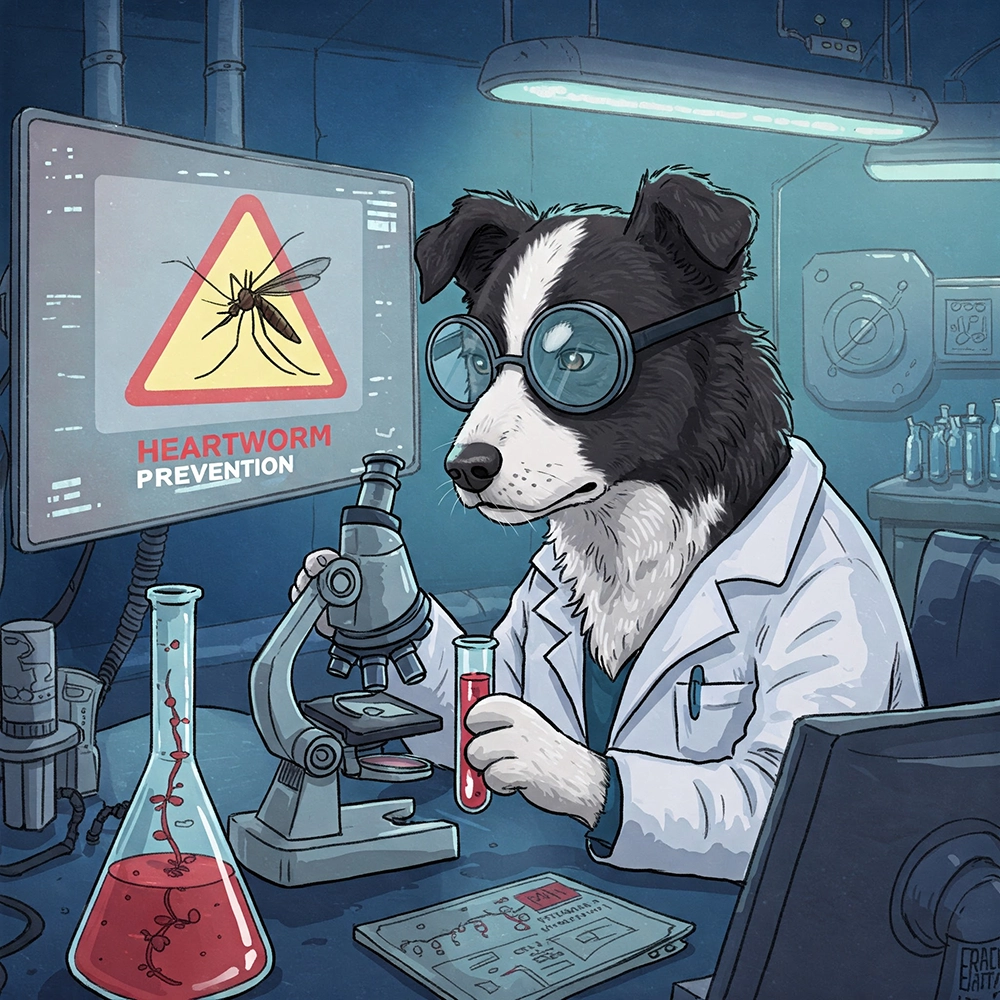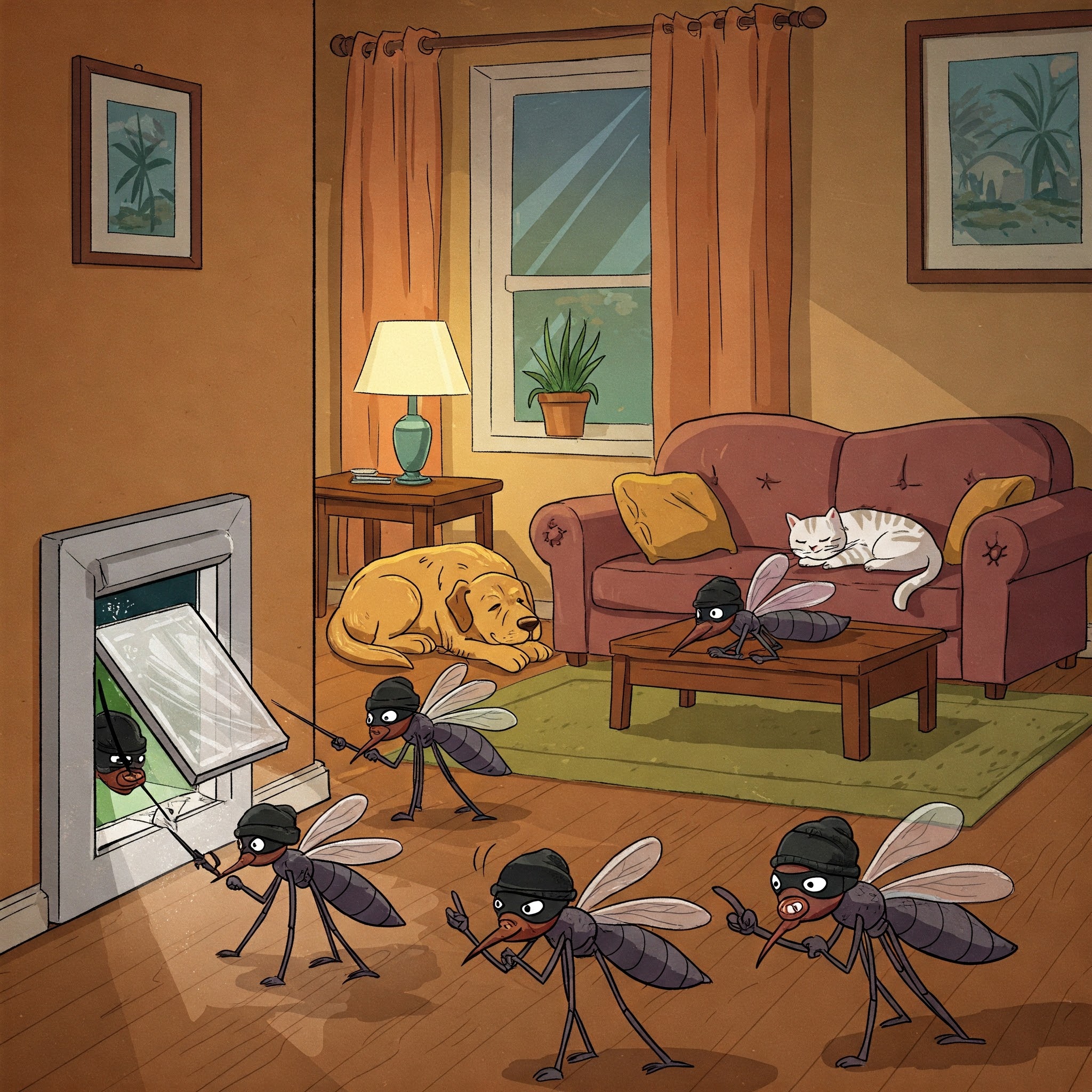Warning: Some of these facts are bound to give you a bad case of the heebie-jeebies. But you should be happy to hear that there are many manageable and preventative methods to protect you and your pet from disease-carrying ticks.
Barking up the wrong tree
It may come to surprise you that ticks are not the tree-hugging pests that many think them to be. In actuality, they live on the ground in various environments whether it is an urban park or rural area. They cannot fly or jump but they can crawl and often crawl up blades of grass onto the host (your pooch) and migrate upwards. This is why many ticks are found on toes and armpits or on the face and head of our pets. Although ticks can be found nearly anywhere, it's best to avoid ideal tick habitats such as wooded areas, tall grasses and leaf piles. If your pet does enter these environments, it is important to carefully check for any ticks as soon as you can.
Ticks are not insects
Ticks are a species of parasite called arachnids that belong to the mite family and are closely related to spiders. If you haven't been lucky enough to see one up close, they have eight legs and lack an antenna. Ticks live off of blood and usually will roam around their host for a day or two before finding the perfect spot to bite and attach themselves. Depending on the life stage, ticks are quite small - only a few millimeters long. However once they attach and start to feed, which can last up to 10 days, they become visual engorged and can measure close to 10 millimeters long!
Ticks are dangerous all-year round
While in most areas of the country, tick season runs from April to November, the first sign of winter does not mean that your pet is no longer at risk. Various species of ticks have life-stages from egg, larvae, nymph and adult- which can develop throughout the year. Some ticks have a type of anti-freeze to survive during winter months while others move indoors with you and your unsuspecting pet! After-all, most homes have an internal temperature of 69-70 degrees. Since an infestation can occur at any time, it is recommended to have year-round protection.
Ticks are dangerous for humans too
There are many types of diseases carried by ticks that can be transmitted to both dogs and people. While Lyme is the most widely known and common tick disease, others like Rocky Mountain spotted fever, anaplasmosis (aka 'dog fever') ehrlichiosis and other emerging diseases can have potentially devastating effects on both you and your dog. While you cannot contract Lyme from your dog, the same tick brought in can easily bite you and transmit it directly. Testing regularly with a 4Dx test, a simple blood test that screens for tick-borne diseases, is always recommended to protect your entire family from ticks!
Use the tried and true removal method
The internet is a wonderful please to find bad information. Some DIYers will suggest using a lit match, applying nail polish or petroleum jelly to remove a tick. In reality, these methods do not work and are potentially dangerous to use on your pet. It goes without saying that fire and fur do not mix. The best and safest method of removing a tick is using a pair of tweezers, grasping as close to the skin as possible and pulling the ticks body out with a steady motion. It is recommended to wear rubber gloves (to protect against any contact with the ticks bodily fluids) and wash the area with soap and water after the removal. Dispose of the tick by placing in alcohol or flushing down the toilet. If you are unsure or uncomfortable with removing a tick, ask the team at Sixteen Mile for help!

Other Articles

As tick populations continue to rise across Canada, pet owners are facing an increasing need to check their furry companions for these persistent pests. Ticks thrive in grassy, overgrown areas and can latch onto pets, searching for the perfect spot to feed. While their bites can be a nuisance, the bigger concern is the potential transmission of Lyme disease and other illnesses. This article explores how to identify, remove, and prevent ticks on your pets, along with the importance of regular testing and professional veterinary treatments to keep them safe.

Think you know what's in your pet's food? Think again! Many common pet food myths have been debunked, from the truth about "holistic" labels to the surprising benefits of by-products. Find out which pet food facts you can trust and which ones are just marketing fluff.

Scratching is a natural and necessary behavior for cats, but it doesn't have to mean shredded furniture. Instead of resorting to declawing, which many believe to be a quick fix, there are humane ways to manage scratching. From nail trims and scratching posts to deterrents and soft nail caps, this article explores effective strategies to keep both your cat and your home happy.

Heartworm disease is a serious condition caused by the parasite Dirofilaria immitis, impacting the heart and lungs of primarily dogs, and sometimes cats and other mammals. **Transmitted by mosquitoes, heartworm can lead to severe cardiovascular issues and potential fatality**. Testing is essential before starting preventative medication, typically given monthly from June to November.

Did you know that heartworm is spread by mosquitoes and that fleas can infest even the cleanest homes? Many pet owners underestimate these parasites, but they can pose serious health risks. Whether your pet is indoor or outdoor, prevention is key. This article uncovers surprising facts about heartworm and fleas, along with essential tips to protect your furry friend.

Think ticks are just tree-dwelling pests? Think again! These tiny arachnids lurk in grass, can survive year-round, and pose serious health risks to both pets and humans. From proper removal techniques to essential prevention tips, this article uncovers the unsettling truths about ticks—and how to keep your furry friend safe.

As tick populations grow due to climate change, a rare but dangerous virus is making headlines: Powassan virus. Unlike Lyme disease, which takes 24 hours to transmit, Powassan can infect you in just 15 minutes. Learn why this virus is a growing concern and how to protect yourself and your pets.